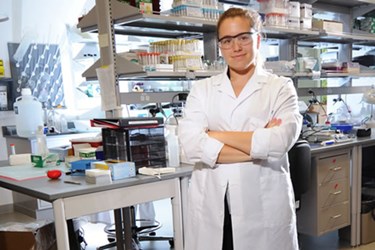Lab-Quality Anemia Testing In 60 Seconds
By Chuck Seegert, Ph.D.

Testing for anemia is currently laboratory-based and can take significant amounts of time. A research team in Georgia, however, has shown that it can be done in only one minute at the point-of-care and with similar accuracy.
Anemia is a disease that affects billions of people worldwide. In children, it can lead to developmental deficits, while in adults it can lead to organ failure and chronic fatigue. In today’s medical environment, anemia is only diagnosed using expensive laboratory equipment found in commercial labs. By knowing the real-time status of their anemic state, many patients could eliminate trips to the emergency room.
Now, a device that started as Erika Tyburski’s senior design project at Georgia Institute of Technology could provide that real-time analysis. Tyburski is the first author of the news study that describes the device and the leader of the development team at the Coulter Department of Biomedical Engineering at Georgia Tech and Emory.
The test device is a two-part apparatus that takes a single droplet of blood to perform its function, according to a recent press release. No electricity is required, and the results are interpreted using a color indicator on the device or a smartphone.
"Our goal is to get this device into patients' hands so they can diagnose and monitor anemia themselves," said Dr. Wilbur Lam, a physician in the Aflac Cancer and Blood Disorders Center at Children's Healthcare of Atlanta and the Department of Pediatrics at the Emory University School of Medicine, in the press release. "Patients could use this device in a way that's very similar to how diabetics use glucose-monitoring devices, but this will be even simpler because this is a visual-based test that doesn't require an additional electrical device to analyze the results."
A study conducted to compare the accuracy of the new test to the gold standard laboratory tests was conducted by the team and published in The Journal of Clinical Investigation. In the study, 238 patients were included with various levels of anemia caused by many different conditions. Analysis of the results showed that the new test method was comparable to those of the laboratory-based tests.
The device requires a mere 500 microliters of blood to perform its function. After the small capillary tube is filled, the two parts of the device are put together and shaken. A chemical reaction that interacts with the hemoglobin causes the blood sample to change color. The sample’s color is then compared to a calibrated chart on the device, according to the press release.
"The test doesn't require a skilled technician or a draw of venous blood and you see the results immediately," said Lam. "We think this is an empowering system, both for the general public and for our patients."
Because the test is so simple and doesn’t require electricity, it also seems ideal for developing nations where patients don’t enjoy access to laboratory services.
Rapid and low-cost diagnostics for use in developing nations and at the point-of-care are becoming more and more common in the today’s healthcare environment. In a recent article on Med Device Online, another rapid and low-cost diagnostic device was introduced for studying sickle cell anemia.
Image Credit: Gary Meek, Georgia Tech
